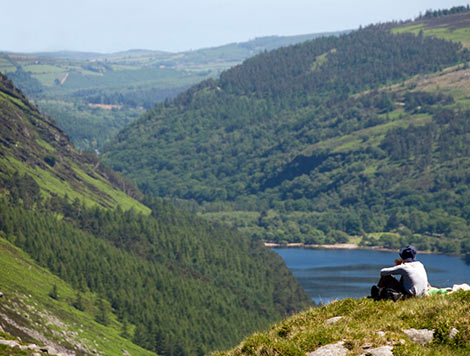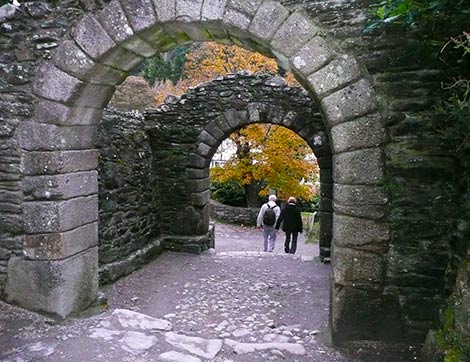It is hard to underestimate the importance of journey or pilgrimage to Celtic Christians. It was central to how they understood the spiritual life. Their understanding may be best expressed in the concept of peregrinatio.
A story from the ninth century tells of three Irishmen who spent seven days drifting over the seas, in a boat without oars, until they finally happened to come ashore in Cornwall. When asked what they were doing and where they were going, they answered that they “stole away because we wanted for the love of God to be on pilgrimage, we cared not where.” This is peregrinatio.
A journey without a specific end or goal in mind, a journey undertaken not from duty or necessity but from a passionate inner desire, a journey into the unknown, a journey that is essentially an inner journey to the true self which is in Christ, a journey that must be undertaken, a journey that brings us to our promised home.
This is what journey or pilgrimage meant to Celtic Christians. They took seriously the command of God to Abraham in Gen 12:1 to leave their own place and journey to the land God would show them. As St. Columba said, they sought to leave everything and go on “perfect pilgrimage” in imitation of Christ.

For the early Irish saints, to leave their home place, to leave Ireland and all that was dear and go into exile was a kind of martyrdom – ban-martra, a ‘white martyrdom.’ It was the greatest sacrifice they could make and they made it for the love of God.
It was this urge towards peregrinatio that caused so many Celtic Christians at this time to exile themselves in lonely hermitages in remote locations, on mountains, on islands, on deserted shores. This was the desire that caused St. Kevin to leave home and family and settle in a dark cave by the isolated shore of the Upper Lake in Glendalough.
It is this same desire that moves so many to come to Glendalough today. They come in search of they know not what, they do not know where the journey will take them, but they know their God calls them in their hearts and so they too come on pilgrimage for the love of God.
Pilgrimage was an important aspect of early Irish Christian Spirituality and many people felt the need for such an experience. At the heart of this longing and desire lay the hope that by travelling to a special place, one might return changed or renewed. Thus the practice developed in Ireland. The places visited varied from old monasteries or wells to mountains that were sacred to people long before the advent of Christianity. People usually went on pilgrimage with a purpose: sickness, misfortune, forgiveness or freedom from negative feelings or bitterness. The desires or wishes, were placed at the pilgrimage shrine in the form of prayers and offerings. However, pilgrimage was and is all about us humans making our way to God.

Long ago, when people went on pilgrimage, they stopped at resting places called “stations”. On our pilgrim journey to the Monastic Site, we will visit many stations, where we will stop, pray, sing and reflect. We will remember that we are standing on ‘holy ground’ and walking in the footsteps of many holy men and women who came here before us. We pray that we will have reverence and respect for everything in the valley.
We might ask ourselves some questions also:
What am I looking for? What do I want from my time here?
SCRIPTURE: Exodus 16: 1 -10 Genesis 28 : 15 Jeremiah 29 : 11
Psalm 25 : 4 – 10 Deuteronomy 1 : 29 – 31
Lord, make us prophets of our times, pilgrims not wayfarers.
May each day begin with prayerful preparation, opening our hearts to a spirit of loving repentance.
Make us aware, that although individuals, we travel with others and help us keep vigil with you in that holy place within the heart.
May each event and meeting of the day be Eucharist, leaving behind something of ourselves in Sacrifice, so that we can celebrate and exult with joy, determined to allow Christ be reflected in us more and more. Thus heralding a new age of hope and joy and freedom.
Ruins are not empty. They are sacred spaces full of Divine presence. A guided tour though the Monastic Site can be a spiritual journey. The Site itself as well as its ancient structures can be ‘stations’ which are metaphors for dimensions of our own inner story of life, eg. times of transition, sacred spaces within us, our hopes and dreams, our beloved dead, the unfinished and incompleteness of our lives, places where we find comfort and encouragement.
As we rest and reflect within the monastic sacred structures which hold the memory and energy of years of worship and prayer we ourselves are nourished. In the beauty of the surrounding landscape we sense the Divine Presence.